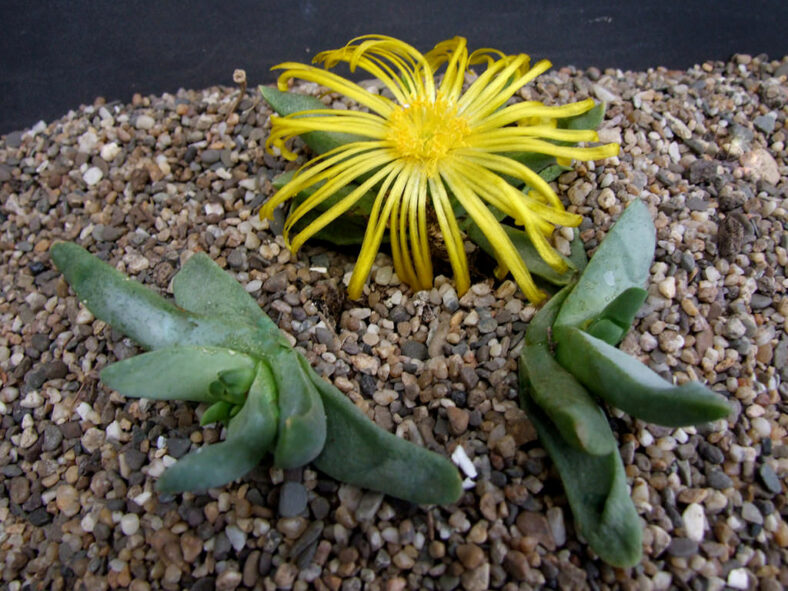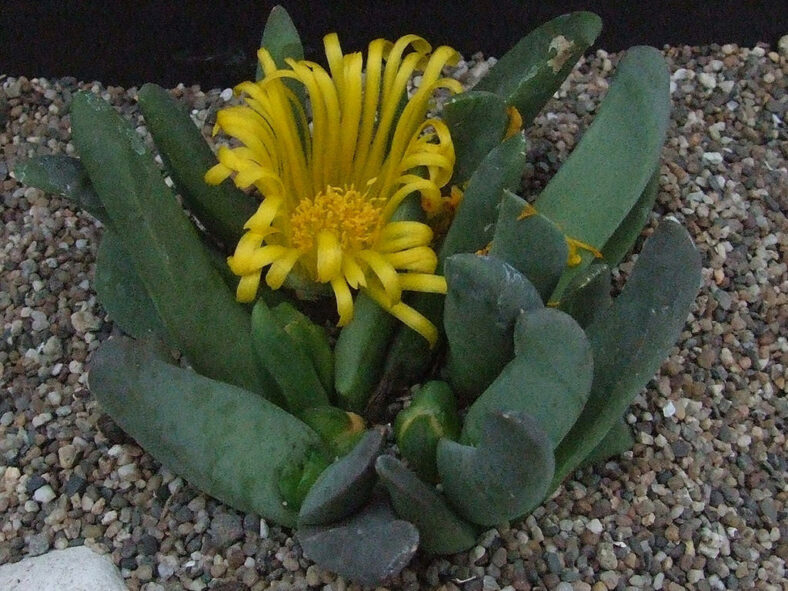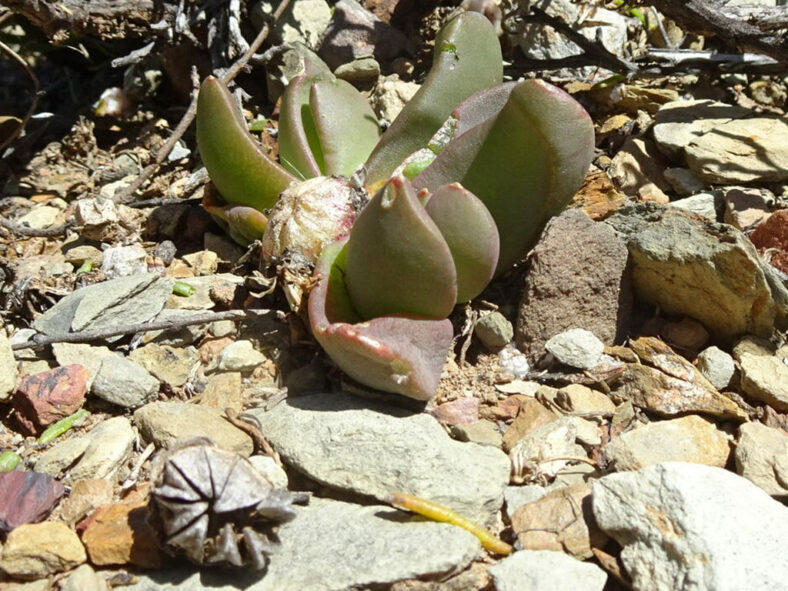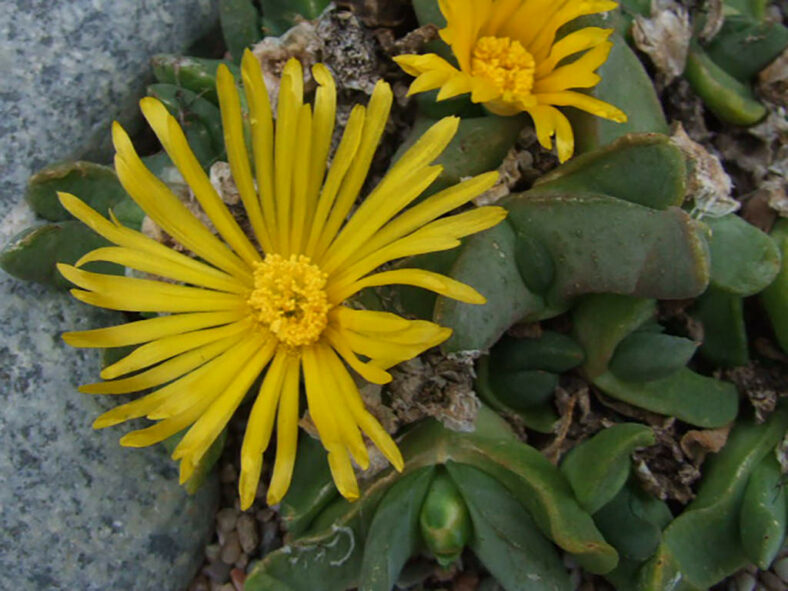Glottiphyllum suave is similar to Glottiphyllum linguiforme but has ticker leaves.
Scientific Name
Glottiphyllum suave N.E.Br.
Synonym(s)
Glottiphyllum herrei
Scientific Classification
Family: Aizoaceae
Subfamily: Ruschioideae
Tribe: Ruschieae
Genus: Glottiphyllum
Etymology
The specific epithet "suave" (pronounced SWAH-vee) means "sweet, pleasant" and refers to the pleasantly scented flowers.
Origin
Glottiphyllum suave is native to South Africa. It grows on quartz or shaly sandstone in western parts of the Little Karoo and northwards into the Great Karoo near Laingsburg.
Description
Glottiphyllum suave is a small succulent that forms a compact clump of fleshy, tongue-shaped leaves arranged in two to four ranks. The leaves are smooth and vary in color from bright green to blue-green, waxy grey, or purplish, depending on the season and growing conditions. They are flat on top and keeled below, measuring about 2 inches (5 cm) long and 1 inch (2.5 cm) wide.
From late fall to winter, Glottiphyllum suave produces bright yellow, mimosa-scented flowers clustered between the leaves near the center of the clump. The flowers can reach a diameter of 3.2 inches (8 cm). The fruits are small capsules that disintegrate and fall from the plant soon after they have released their seeds.

How to Grow and Care for Glottiphyllum suave
Light: Glottiphyllum suave requires bright light but not too much direct sunlight. So, a windowsill that receives 4 to 5 hours of direct sunlight in the morning and partial shade in the afternoon will be a perfect spot for indoor growing.
Soil: The plant thrives in porous soil, allowing the water to drain away quickly. Therefore, use commercial soil for succulents or make your own well-draining mix.
Temperature: High temperatures are not a problem as long as there is plenty of fresh air, but this plant is not cold-hardy. It grows best in USDA Plant Hardiness Zones 9b to 11b, with average minimum winter temperatures ranging from 25 to 50 °F (-3.9 to 10 °C).
Watering: To keep Glottiphyllum suave healthy, it is most important to know when, how much, and how often to water. During the dormant period, usually in summer, the plant requires little or no water. In the fall, once it grows again, water thoroughly but allow the soil to dry between waterings.
Fertilizing: As long as you repot this plant every two years, it does not need fertilizer.
Repotting: Even if your plant can stay happy in the same pot for years, you can repot it once in a while to give it more space anytime during the growing season. However, the best time is at the beginning of the growing season.
Propagation: Although it is usually started from seeds, Glottiphyllum suave can be easily propagated from stem cuttings during the growing season.
Learn more at How to Grow and Care for Mesembs.
Toxicity of Glottiphyllum suave
Glottiphyllum suave is considered non-toxic, so having it around kids and pets is safe.
Links
- Back to genus Glottiphyllum
- Succupedia: Browse succulents by Scientific Name, Common Name, Genus, Family, USDA Hardiness Zone, Origin, or cacti by Genus
Photo Gallery
Click on a photo to see a larger version.


